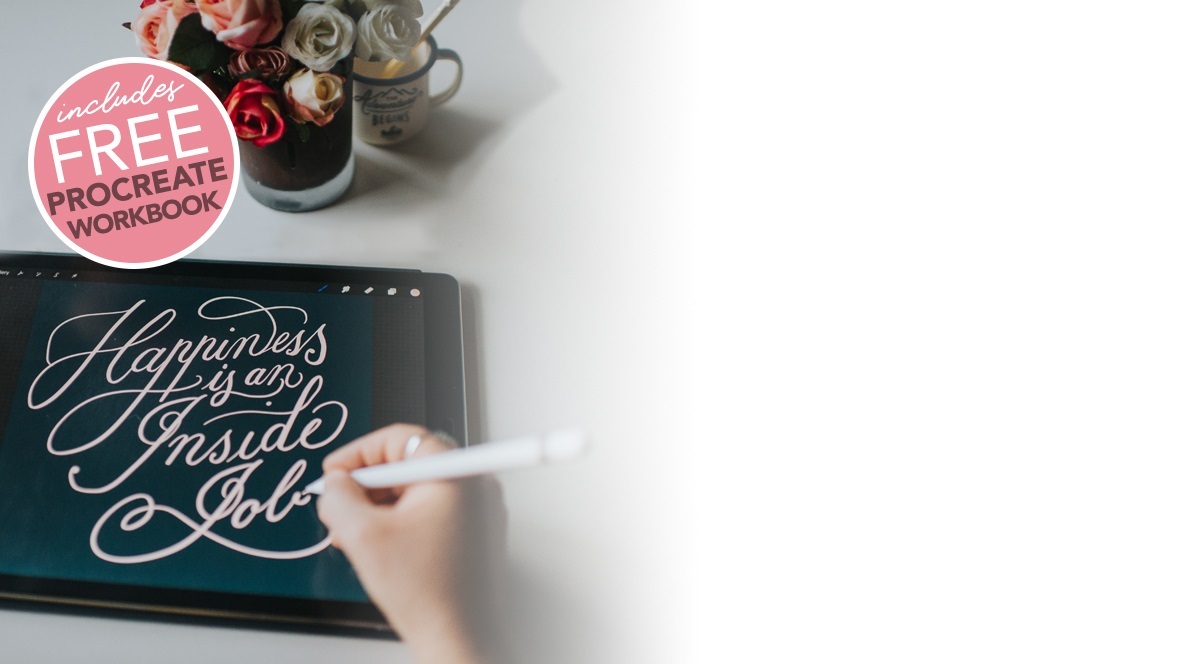Today we’re talking about Clipping Masks.
Knowing how to utilise masking is one of those knowledge bombs that once it clicks and you see the power they have, you won’t know how you lived without them! At the end of this demo, you will understand the difference between a clipping mask and a regular mask, and be able to determine which is the best method for your situation.
We’ll first look at masking in a bit more detail, and then the video demo below will show you a Clipping Mask in action.
What is Masking
When talking about layers, you’ll often hear people speak of ‘destructive’ and ‘non-destructive’ techniques. ‘Destructive’ refers to alterations that make permanent changes (ie. like erasing directly on a layer). This then means that (other than using your ‘undo’ option) you can not reinstate anything back.
‘Non-destructive’ on the other hand, means you can edit continuously. By erasing parts of the layer using a mask, you can always reveal it again later should you need to. Nothing is permanently taken away.
This is definitely a more flexible way of working, giving you the freedom to change and refine the design without problem.


Learn Calligraphy
on the iPad
from Scratch!
Create stunning calligraphy in Procreate with no experience or special tech skills (even if you have messy handwriting and don’t think you’re creative enough)
WATCH THE FREE WORKSHOPThe Difference Between Clipping Masks and Layer Masks
Ok, so that’s masking in general, but what is the difference between clipping masks and regular layer masks?
Procreate’s definition sums it up nicely : ‘Clipping Masks let you clip multiple layers to the content of one layer, allowing for powerful non-destructive alterations’
Regular masking only allows you to attach a mask to one single layer. With Clipping Masks, you can have several layers masked by the one shape.
Another key difference is that you can see the mask itself. In Layer masks, the form of the mask is only visible where it overlaps with the contents of the layer it is applied to. If the layer contents don’t fill the canvas and there are areas of the mask are that don’t have anything under it, those parts of the mask won’t show.
Clipping masks on the other hand, use the a layer itself to define the shape of the mask, meaning the mask is visible. This also means you are not restricted to using black and white, it can be any colour.
Watch a Video Demo of Clipping Masks in Procreate
Click here to see the paint textures featured in the demo.
Key Points to Remember when using Clipping Masks:
- You can add multiple layers to the one Clipping Mask
- You are not restricted to black and white. The Mask Layer can be any colour
- The layer defining the shape of the mask will be visible
- The layers that will be ‘clipped’ need to be *above* the mask layer
- You can alter the mask layer
- You need at least one other layer before you see the option to create ‘Clipping Mask’ from the layer options menu drop down

Dorothy Siemens
Thanks for this explanation – it was very helpful!
Nicole Mauloni
You’re welcome Dorothy. Glad it helped.
Nicola FitzGerald
Hi Nicole. Thanks for the great video. I used procreate clipping masks recently just like you have and now I can’t seem to get them to work. Can I ask if your photoshop image of the text was originally a solid black background or was it a transparent png (so coloured lettering but background transparent)? I know you have to use a png and I have created several black and white pngs but the white area just isn’t letting the image show through as it should. Puzzled! Any help gratefully received. Thanks Nicole.
Nicole Mauloni
Hey Nicola, I think I answered your question on YouTube, but just incase anyone else is having difficulty with this… the text is on its own layer with a separate black layer background below. So the lettering or type should be on its own layer (with transparency) and another layer for the background underneath. Hope that helps!
Isabella Biava
Hello Nicole,
I just found your great site! thanks a lot for all the beautiful tips. I was trying to use the clipping mask to give color to a mandala I have drawn in black, but it doesn’t seem to work. Do you have any clue?
in the same project I have tried with a text and it worked. Just with the mandala layer doesn’t work. thanks for your help 🙂
Nicole Mauloni
Hi Isabella, thanks for the kind words. A clipping mask should work on any layer. Is the mandala on one single layer? If you have different layers making up the design, the texture will only clip to the one layer you set it on. Hope that helps!
Isabella Biava
Hello Nicole,
thanks a lot for your kind reply.
I realized my mistake. I had drawn the mandala on a white background which was in the same layer, that’s the reason why I couldn’t use alpha lock! my bad!
thanks for your help. stay safe! cheers!
Nicole Mauloni
Ah! Yes, that makes sense. So glad you worked it out! 🙂
John hoogland
Is there a way to use a solid clipping mask on a layer with transparent paint, without the clipping mask becoming transparent as well?